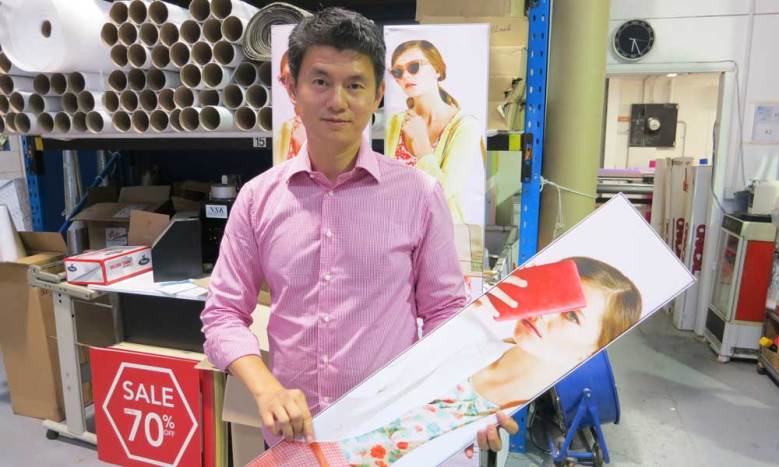
Next Printing wants to become "the top fabrics printer in Australia" after investing $500,000 in the Asia-Pacific's first Durst Rhotex 322.
The Rhotex can produce up to 140sqm per hour and will be the Sydney firm's third direct-to-fabric machine when it arrives in January.
Next moved into fabrics in November 2011 after identifying the sector as one with better margins due to the high barriers to entry.
General manager Romeo Sanuri said the Rhotex would mainly be used for banners and stretch frames with silicon edging. He added that it would help Next capitalise on the increasing shift from vinyl to fabrics.
"Fabrics is still a difficult market to get in to, so if you've gained the experience you might as well accelerate before the market catches up with you," he told ProPrint.
"In terms of speed to market, if we're ahead of the curve [with technology], we will always be strong."
[Feature: Next searches for new markets]
Sanuri said Next had invested $500,000 in the Rhotex. He said it would help the 46-staff firm win new business and "could potentially make us the top fabrics printer in Australia by the end of next year".
"The colour gamut, the colour density and the strength of the colour is some of the best stuff I've seen in my fabrics experience," he said.
One of the reasons Next opted for Durst was because of its familiarity with the technology. It has two Durst Rho P10 250 flatbeds, a Rho 351R roll-to-roll printer, Rho 320R roll-to-roll printer, Lambada 130 photographic roll-to-roll printer and Theta 76 photographic roll-to-sheet printer.
Sanuri told ProPrint that another attractive feature of the Rhotex is that it can take a jumbo roll of fabric, which means it can run unattended for long periods, including overnight.
Sanuri said Next had given itself the opportunity to boost fabric volumes after reducing a bottleneck in its finishing department with the installation of an Océ ProCut 1600 in August.
He said the operators were still mastering the $300,000 cutter but that it had already reduced finishing times by 60%.
Durst's local distributor, Photo Electronic Services, said the Rhotex was "an industrial quality printer designed and built for 24/7 operation".
Managing director Paul Taylor said it had an automated media loading system to accelerate media changes, an automated cleaning system to reduce downtime and a closed drier system to minimise energy consumption.
"The Rhotex 322 opens new markets for digital printers. Apart from soft signage applications, textiles can be used for wall coverings, domestic textile and interior design, and fashion applications," he told ProPrint.
[Related: More news about installations]
Comment below to have your say on this story.
If you have a news story or tip-off, get in touch at editorial@sprinter.com.au.
Sign up to the Sprinter newsletter
